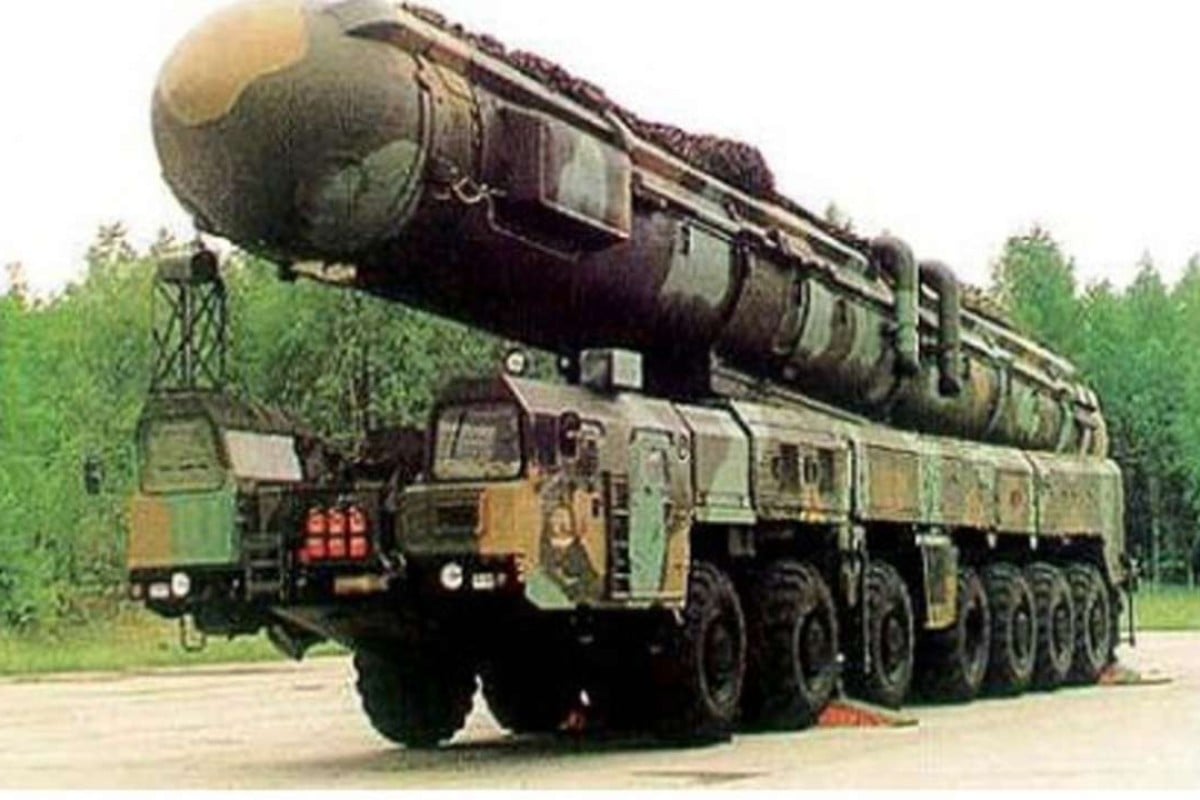US Missile Deployment: A Growing Concern For China

Table of Contents
Geopolitical Implications of US Missile Deployment in the Asia-Pacific
Threat Perception by China
China views the increased US missile deployment in the Asia-Pacific, particularly the deployment of systems like THAAD (Terminal High Altitude Area Defense) and Aegis Ashore, as a direct threat to its national security. This perception stems from several factors:
- Increased US military presence near Chinese borders: The positioning of advanced missile systems in countries like South Korea and Japan brings them significantly closer to Chinese territory, reducing response times and increasing China's perceived vulnerability.
- Modernization of US missile technology: The continuous development and deployment of increasingly sophisticated US missile systems, capable of striking targets with greater accuracy and range, heighten China's sense of insecurity.
- Perceived threat to China's territorial integrity: The deployment of these systems is often seen by China as a tacit endorsement of Taiwan's independence and a challenge to China's claim over the island, further fueling tensions.
Official Chinese statements and media coverage consistently emphasize this perceived threat, framing US actions as part of a broader strategy to contain China's rise.
Impact on Regional Stability
The escalating US missile deployment and China's resulting countermeasures create a volatile security environment. This arms race significantly increases the risk of miscalculation and accidental conflict:
- Escalation of tensions in the South China Sea: The presence of US missile systems can exacerbate existing disputes in the South China Sea, potentially leading to further naval confrontations and heightened tensions between claimant states.
- Increased military exercises: Both the US and China have ramped up military exercises in the region, increasing the chances of miscommunication or unintended escalation.
- Potential for accidental conflict: The complexity of the military systems involved, coupled with heightened tensions, raises the risk of accidental conflict or an unintentional escalation of a minor incident.
The responses of other regional actors, such as Japan and South Korea's alignment with the US, and Vietnam's cautious balancing act, further complicate the already tense situation.
Economic Consequences and the Shifting Global Order
Disruption of Trade and Investment
The geopolitical instability caused by US missile deployment and China's response carries significant economic consequences. Heightened tensions can disrupt regional trade routes and negatively impact foreign investment:
- Impact on supply chains: Disruptions to shipping routes and increased uncertainty can severely affect global supply chains, particularly in sectors reliant on the Asia-Pacific region.
- Potential for trade wars: Escalating tensions could lead to further trade restrictions and tariffs, impacting bilateral trade between the US and China and potentially triggering wider trade wars.
- Decreased investor confidence: The uncertainty and instability generated by the arms race can lead to a decline in foreign direct investment in the region, hindering economic growth.
Industries like technology, manufacturing, and tourism are particularly vulnerable to these disruptions, potentially leading to job losses and reduced economic output.
Reshaping the Global Power Balance
The ongoing US missile deployment significantly alters the global power dynamic, impacting China's ambition to become a leading global power:
- Competition for influence in the Indo-Pacific: The deployment intensifies the competition between the US and China for influence in the Indo-Pacific, shaping alliances and partnerships across the region.
- Impact on international institutions: The growing rivalry challenges the authority and effectiveness of existing international institutions, potentially leading to fragmentation of the global order.
- Potential for a new Cold War dynamic: The escalating tensions and military buildup bear similarities to the Cold War era, creating a new bipolar global power structure with significant implications for international security and cooperation.
The role of alliances and partnerships, such as the Quadrilateral Security Dialogue (Quad), becomes crucial in shaping the geopolitical landscape and countering China's growing influence.
China's Response and Countermeasures
Military Buildup and Modernization
China's response to US missile deployment involves a significant military buildup and modernization of its own missile capabilities:
- Investment in advanced missile technology: China is investing heavily in developing and deploying advanced missile systems, including hypersonic missiles and anti-ship ballistic missiles, to counter the perceived threat from the US.
- Development of anti-access/area denial (A2/AD) strategies: China is focusing on developing A2/AD capabilities to deter US military intervention in the region.
- Increased military spending: China's military budget has been steadily increasing, reflecting its commitment to bolstering its military capabilities.
Specific Chinese missile programs like the DF-21D and DF-26 are examples of China's efforts to enhance its strategic deterrence capabilities.
Diplomatic Initiatives and Regional Alliances
Alongside military responses, China employs diplomatic initiatives and regional alliances to counterbalance US influence:
- Strengthening ties with other regional powers: China is actively cultivating closer relationships with other regional powers, such as Russia, to create a counterweight to US influence.
- Engagement in multilateral forums: China actively participates in multilateral forums like the Shanghai Cooperation Organisation (SCO) to promote its vision for regional security and challenge US-led initiatives.
- Initiatives to promote regional security cooperation: China proposes alternative regional security frameworks that emphasize cooperation and de-escalation, aiming to reduce US influence and promote its own vision for regional order.
These diplomatic efforts highlight China's strategy to address concerns and establish alternative partnerships, mitigating the impact of US missile deployment.
Conclusion
The ongoing US missile deployment in the Asia-Pacific region has profound geopolitical and economic implications, significantly impacting the regional security landscape and the global power balance. China’s perception of encirclement, coupled with concerns about its territorial integrity and economic interests, has led to a substantial military buildup and diplomatic countermeasures. Understanding the complexities of US missile deployment and its impact on China is crucial for navigating the evolving geopolitical landscape. Stay informed about this critical issue and continue to explore the nuances of this increasingly complex relationship. Further research into the specifics of various missile systems, economic impact assessments, and analyses of diplomatic initiatives will provide a deeper understanding of this critical issue.

Featured Posts
-
 F1 Kaos Hamilton Och Leclerc Diskvalificerade
May 20, 2025
F1 Kaos Hamilton Och Leclerc Diskvalificerade
May 20, 2025 -
 Anchor Brewing Company Shuttering Its Doors After 127 Years Of Operation
May 20, 2025
Anchor Brewing Company Shuttering Its Doors After 127 Years Of Operation
May 20, 2025 -
 Actualizacion Sobre La Salud De Michael Schumacher Una Noticia Que Conmovio
May 20, 2025
Actualizacion Sobre La Salud De Michael Schumacher Una Noticia Que Conmovio
May 20, 2025 -
 Manaus Festival Da Cunha Com Maiara E Maraisa Confirmacao Oficial
May 20, 2025
Manaus Festival Da Cunha Com Maiara E Maraisa Confirmacao Oficial
May 20, 2025 -
 New Hmrc Letters Action Required For Uk Households
May 20, 2025
New Hmrc Letters Action Required For Uk Households
May 20, 2025
